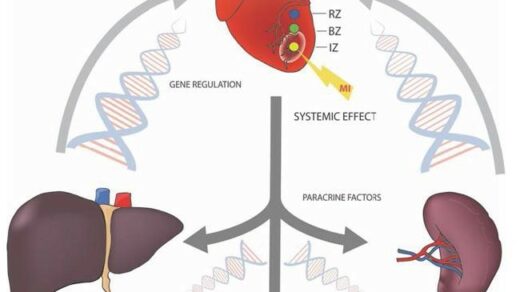Read short summaries of the latest oncology-focused research published in this week’s issue of Oncotarget, Volume 12, Issue 12.

Oncotarget’s Volume 12, Issue #12
New Publications
Cover (Priority Research Paper): Frame-shift mediated reduction of gain-of-function p53 R273H and deletion of the R273H C-terminus in breast cancer cells result in replication-stress sensitivity
Origin: New York, United States
Institutions: City University of New York, Columbia University, Weill Cornell Medical College
Quote: “We recently documented that gain-of-function (GOF) mutant p53 (mtp53) R273H in triple negative breast cancer (TNBC) cells interacts with replicating DNA and PARP1.”
News: LY6 gene family presents a novel class of potential biomarkers associated with overall survival outcome of pancreatic ductal adenocarcinoma
Origin: New York, United States
Institution: Albert Einstein College of Medicine
Quote: “In this issue of Oncotarget, Russ et al. presents bioinformatic analysis of LY6 gene family in clinical samples of pancreatic ductal adenocarcinoma from TCGA collection.”
Editorial Paper: Neoantigen evolution in head and neck cancer progression: Where do we go from here?
Origin: Illinois, United States
Institution: University of Chicago Medicine
Quote: “Locoregional head and neck squamous cell carcinoma (HNSCC) can be treated with multimodality therapy, however approximately 50% of patients will develop recurrent disease either locally or distantly [1].”
YOU MAY ALSO LIKE: Latest Oncotarget Videos Hosted on LabTub TV
Editorial Paper: Unexpected zinc dependency of ferroptosis – what is in a name?
Origin: North Carolina, United States
Institution: Duke University
Quote: “The importance of metal homeostasis for our health is illustrated by extensive disease phenotypes associated with their abnormal accumulation or deficiency.”
Research Paper: Role for Fgr and Numb in retinoic acid-induced differentiation and G0 arrest of non-APL AML cells
Origin: New York, United States
Institution: Cornell University
Quote: “Retinoic acid (RA) is a fundamental regulator of cell cycle and cell differentiation. Using a leukemic patient-derived in vitro model of a non-APL AML, we previously found that RA evokes activation of a macromolecular signaling complex, a signalosome, built of numerous MAPK-pathway-related signaling molecules; and this signaling enabled Retinoic-Acid-Response-Elements (RAREs) to regulate gene expression that results in cell differentiation/cell cycle arrest.”
Research Paper: Dynamic cellular biomechanics in responses to chemotherapeutic drug in hypoxia probed by atomic force spectroscopy
Origin: North Dakota, United States
Institution: North Dakota State University
Quote: “The changes in cellular structure play an important role in cancer cell development, progression, and metastasis. By exploiting single-cell, force spectroscopy methods, we probed biophysical and biomechanical kinetics (stiffness, morphology, roughness, adhesion) of brain, breast, prostate, and pancreatic cancer cells with standard chemotherapeutic drugs in normoxia and hypoxia over 12–24 hours.”
Research Paper: Genomic clustering analysis identifies molecular subtypes of thymic epithelial tumors independent of World Health Organization histologic type
Origin: California, Indiana, United States
Institutions: Stanford University School of Medicine, Stanford Cancer Institute, Indiana University School of Medicine
Quote: “Further characterization of thymic epithelial tumors (TETs) is needed. Genomic information from 102 evaluable TETs from The Cancer Genome Atlas (TCGA) dataset and from the IU-TAB-1 cell line (type AB thymoma) underwent clustering analysis to identify molecular subtypes of TETs. Six novel molecular subtypes (TH1-TH6) of TETs from the TCGA were identified, and there was no association with WHO histologic subtype.”
Research Paper: Deep learning with deep convolutional neural network using FDG-PET/CT for malignant pleural mesothelioma diagnosis
Origin: Hyogo, Japan
Institutions: Hyogo College of Medicine, Kobe University Graduate School of Medicine
Quote: “This study analyzed an artificial intelligence (AI) deep learning method with a three-dimensional deep convolutional neural network (3D DCNN) in regard to diagnostic accuracy to differentiate malignant pleural mesothelioma (MPM) from benign pleural disease using FDG-PET/CT results.”
Click here to read Oncotarget’s Volume 12, Issue #12.
—
LATEST POSTS BY ONCOTARGET:
- When the Cure Becomes the Cause: A Rare Case of Cancer from Donor Cells
- A Rare Genetic Shift That Helped Lung Cancer Evade Treatment
- How a Simple Blood Test Could Predict Colorectal Cancer Surgery Success
- HER2-Low Breast Cancer: A New Understanding
- A New Approach for Cancer Treatment: The Surprising Relationship Between KLRG1 and PD-1
Oncotarget is a unique platform designed to house scientific studies in a journal format that is available for anyone to read—without a paywall making access more difficult. This means information that has the potential to benefit our societies from the inside out can be shared with friends, neighbors, colleagues, and other researchers, far and wide.
For media inquiries, please contact media@impactjournals.com.



